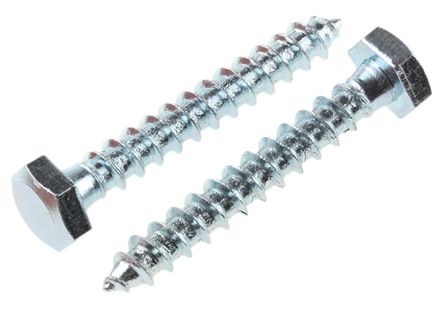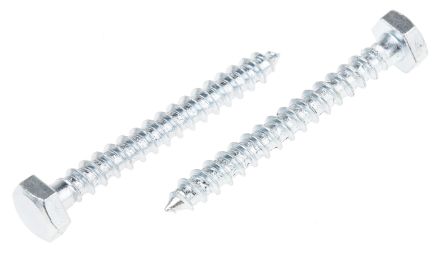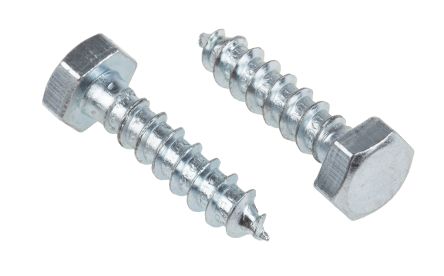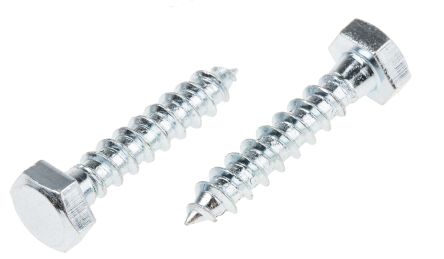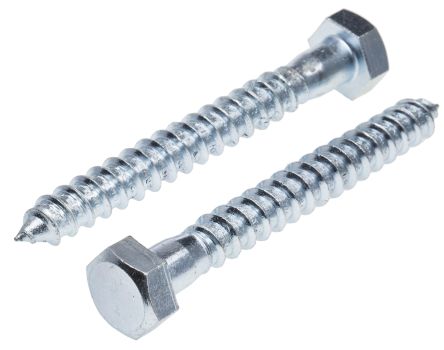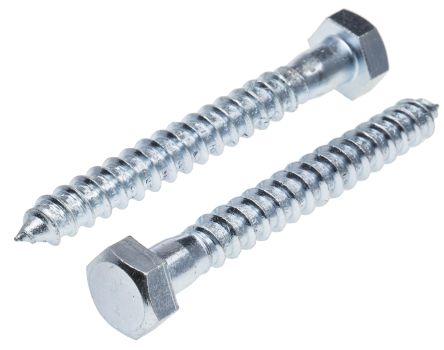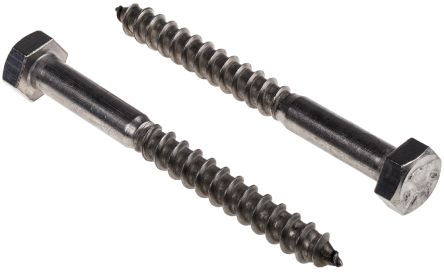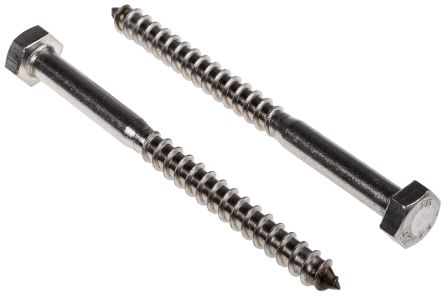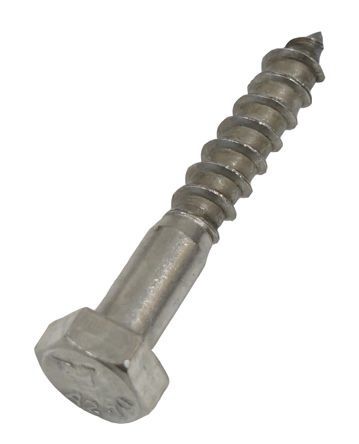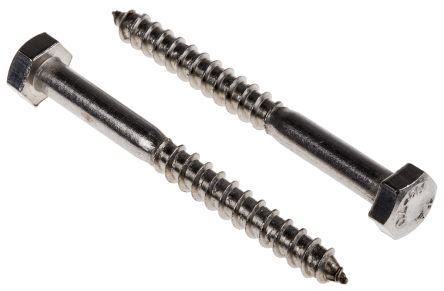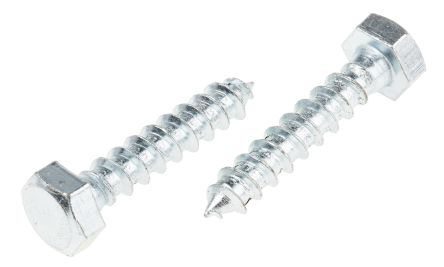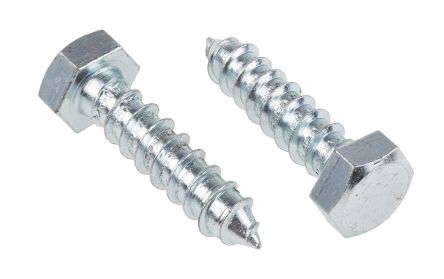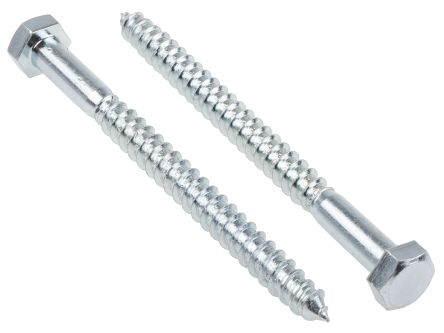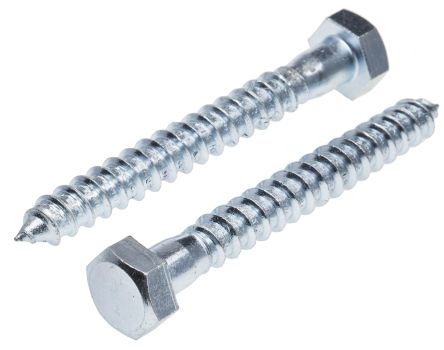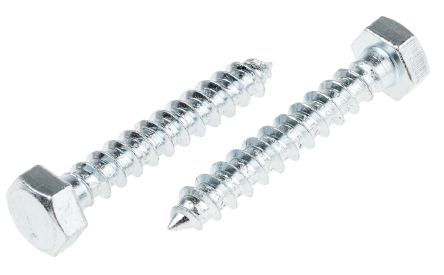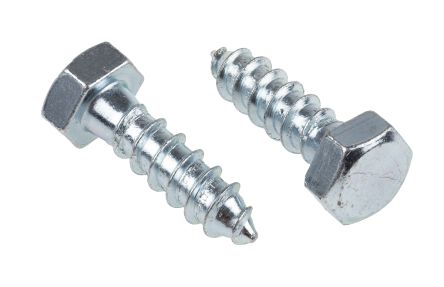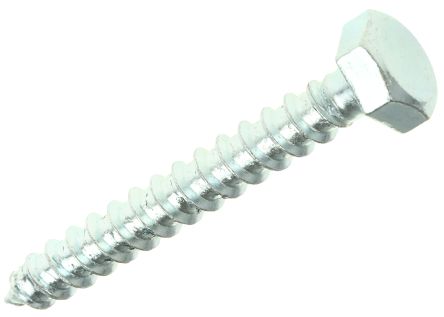- Automation & Control Gear
- Cables & Wires
- Enclosures & Server Racks
- Fuses & Circuit Breakers
- HVAC, Fans & Thermal Management
- Lighting
- Relays & Signal Conditioning
- Switches
- Batteries & Chargers
- Connectors
- Displays & Optoelectronics
- ESD Control, Cleanroom & PCB Prototyping
- Passive Components
- Power Supplies & Transformers
- Raspberry Pi, Arduino, ROCK, STEM Education & Development Tools
- Semiconductors
Coach Screws
Coach screws are also known as lag bolts or lag screws. They are a type of heavy-duty fastener for fastening metal pieces with timber or for joining heavy timbers. They have a hexagonal head and need a wrench or socket spanner for unscrewing or tightening.
Due to their size, coach screws are different from wood screws. The thickness of wood screws ranges from 3 to 6 millimeters. Coach screws are heavier-duty fixings because of their thickness, which ranges from 6mm to 12mm.
How to Choose the Best Coach Screws, Lag Screws, or Lag Bolts?
It sometimes gets tricky to choose the best lag screw according to your project and the correct size.
Lag bolts have two basic measurements. The length of the screw from the tip to the bottom of the hexagonal head is measured in millimeters and is represented by the M rating, which is the diameter of the screw thread.
A screw with the parameters M8 x 100mm has a maximum thread diameter of 8 millimeters and a length of 100mm from the screw tip to the screw head's base. Similarly, a 10mm lag bolt will have a length of 10mm from the tip to the base.
We provide the following sizes for our heavy-duty coach screws including 10mm coach screws or 75mm coach screws or 100 mm coach screws in the M6, M8, M10, M12, M16, and the M20.
Lagging Screws Material
We have 3 types of coach screws available based on material. Let's discuss their basic function and uses.
Galvanized Lag Bolts
Coach screws with a zinc coating are known as galvanized coach screws. These screws, which often have a matt surface, are frequently used in construction, industrial settings, sheet metal, and automotive parts. The zinc coating provides resistance against corrosion. Galvanized lag screws are therefore suited for outside, warm, humid, and damp settings.
Passivated Lag Bolts
Coach screws that have been passivated are electroplated with a zinc layer to provide increased corrosion resistance, however, for the best corrosion resistance, use galvanized screws. Also, passivated screws often have a high-shine surface, unlike the galvanized alternative. These are perfect for uses in which aesthetics matter.
Stainless Steel Coach Screws
Coach screws made of stainless steel work well outdoors. Since there is no coating, the screw's structure provides corrosion protection. Coach screws made of carbon steel corrode when used with some types of wood, such as oak, hence it is preferable to use stainless steel coach screws. Our strongest coach screws are made of stainless steel, which is also resistant to the oils and acids found in many types of wood.
How to Use Coach Screws?
Drilling a pilot hole before fastening it to the wood is necessary to keep the wood from splitting. The screw may then be driven straight into the material. We do suggest adding a washer, both to preserve the wood and to make it simpler, should the need arise, to take out the coach screw in the future.
Drill a hole and insert a wall plug for fixing to sturdy materials like concrete or masonry. The depth and diameter of the wall plug must match those of the hole you just drilled. That is important to hold everything firmly in place.
Also, to avoid harming the screw head, it's crucial to make sure you have the right size spanner or wrench for the job.
Shop Our Range Of Lag Screws As Per Your Requirments.
Explore a wide variety of coach screws we offer.
